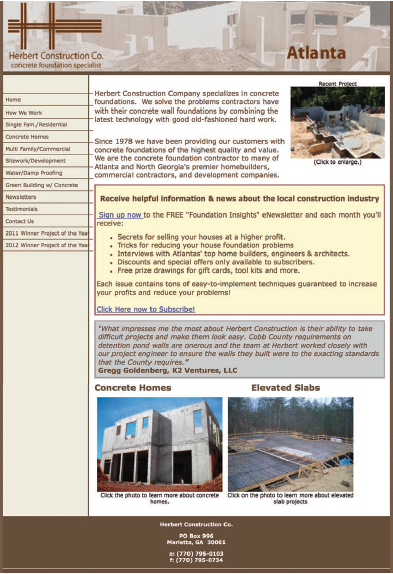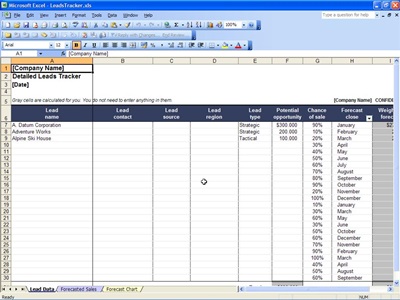The 6 Basic Sales & Marketing Tools for Concrete Contractors
When it comes to sales and marketing, we need to focus our limited time and resources on the vital few things that work to bring in new customers and put money in our pocket. Below are the tactics and tools that do just that.
My daughter is attending an advanced indoor soccer camp for a few weeks this winter. She is a bona-fide soccer superstar, and her mother and I knew she would enjoy more time with the ball and some of her teammates. We also knew that it would improve her skills between the Fall and Spring soccer seasons.
The soccer camp is put on by former footballers from England. As expected, they are teaching the young girls advanced soccer techniques. Those sophisticated moves are demonstrated and practiced.
However, for all of the time spent on the advanced techniques, they spend even more time on the basics. The coaches have the girls practice the basics of ball control and passing over and over again.
Without the solid foundation of the basics – and the continual practice of those basics – the advanced techniques would not be possible.
This important lesson applies to concrete contractors’ sales and marketing, too.
Many of the contractors that contact me for help with their businesses don’t have basic sales and marketing tools in place and in use.
They rely solely on word-of-mouth advertising and referrals from past customers. Or, they cave in to the social media hype and mistakenly think that getting likes and followers will make their phone ring. Without basic sales and marketing tools, contractors struggle to find consistent, profitable work.
As contractors, our days are filled with too many things to do and multiple fires to put out. When it comes to sales and marketing, we need to focus our limited time and resources on the vital few things that work to bring in new customers and put money in our pocket. Below are the tactics and tools that do just that.
When you use the six tools listed below, you will begin to get leads from multiple sources. You’ll track those leads and follow up on jobs that you’ve bid. And, you’ll get more referrals and repeat business.
Here are the 6 Basic Sales & Marketing Tools Every Concrete Contractor Needs:
1. Website
It is important to have a good, solid website that quickly and simply tells visitors:
- What you do
- Where you do it
- Why you are different and better than your competition
- How to contact you
If your website clearly conveys these four things, then it is a very effective sales tool. When someone is considering using your company, the first thing they do is perform an online search for you and your business. Your website needs to be there ready for them.
Your website doesn’t have to be the latest whiz-bang, award-winning design. But, it does have to convey why you are a better choice than any other contractor. This differentiation between you and your competitors is commonly referred to as your Unique Selling Proposition, or USP.
One other important aspect of your website is that it must be mobile responsive. This means that it has to be coded so that it is easily viewed on smart phones and tablets. The use of mobile phones and tablets is on the rise while desktop and laptop usage is on the decline. Be sure people can view your website on any of these devices.
2. Jobsite Signs
Don’t overlook the power of simple jobsite signs. Since concrete contractors are at the beginning of the building construction, your company sign is visible on each jobsite for a long time.
One of the top ways general contractors, homebuilders, and homeowners choose what contractor to contact is by looking for companies that work on projects similar to their own. Your jobsite sign will be seen by those people.
At my own concrete construction company, we have been using jobsite signs for over 22 years. We first heard about them from longtime CFA members Gary and Dan Bromley of ABI Corp. When they told us about the signs, we immediately had signs made and saw results with them right away.
For every one of those 22-plus years that we’ve used jobsite signs, they have been one of our top five ways of bringing in new customers.
3. Lead Tracking Sheet
When a new prospect contacts your company by phone, email, website inquiry, or any other way, they are a called a “Lead.”
The million-dollar question is: “Why did that lead contact you?” Were they referred to you? Did they see a jobsite sign? Did they do a Google search and then clicked on your website?
It’s very important to record those leads as soon as they come in, as well as where they came from. You use a Lead Tracking Sheet to do just that.
When you know what sales and marketing tactics are bringing in the leads, you can increase your spending in those areas, and decrease your spending in the areas that are not bringing in the leads.
The Lead Tracking Sheet also tells you who referred the lead to your company. This allows you to thank the referrer, which encourages them to refer more people to your company.
4. Bid Log
This simple excel spreadsheet is used to record every estimate that you send out. It records the bid date, bid number, prospect/customer, project name, bid amount, and pricing structure.
You then use the Bid Log to follow up on those estimates. Once it is known whether you’ve won or lost the job, that info is entered into the spreadsheet, as well.
In addition to keeping all of your bidding activity recorded in one place, the Bid Log allows you to follow up on estimates that you’ve sent out, preventing projects from falling through the cracks. The Bid Log helps you see what’s in your pipeline – work to be bid, as well as projects you’ve won and will begin soon. It also allows you to gauge where the pricing is headed in your market because you track the outcome of jobs won and lost.
5. Thank You Cards
This easy, low-tech tool is extremely effective for getting more referrals, welcoming new customers, and thanking customers for the work.
Get cards imprinted with your logo. Use these cards to send hand-written thank you notes to those that refer you. Send them to your new customers to welcome them to your company. Send them to customers that paid quickly, thanking them for their work.
In a world of electronic communication – email, texts, tweets and likes – a hand-written note stands out like a Hawaiian Tropic model on a jobsite. Your note will be noticed, appreciated, and remembered. Do not underestimate how powerful this tool is to the success of your construction company.
6. Salesperson
This is the most difficult tool on this list to implement. You may be the one and only salesperson for your company. However, you also have a hundred other things you need to do each day.
A dedicated salesperson whose pay is tied to profitable sales and the effective management of customer accounts can be a game changer for your business. They can bring in a lot of new, profitable work for you.
In construction, most sales are still made by good old-fashioned, face-to-face selling. A salesperson can grow your sales faster than almost any other thing you can do. To learn more about hiring a salesperson, read my article in the previous issue of this magazine. I lay out the five questions to ask yourself to determine if one is right for your company.
Those are the six basic sales and marketing tools that every concrete contractor should be using every day.
Just as soccer players must first master the basics before moving on to more advanced moves, so do contractors with their sales & marketing. Get these basic tactics implemented and in use before anything else.
Don’t even think about venturing into the world of content marketing, Facebook ads or tweeting about your company unless you’re already really good at the basics above.
When contractors ask me about using advanced marketing tactics, here are some rules I tell them:
- Website before social media
- Thank You cards before content marketing
- Jobsite signs before online banner ads
- Print newsletter before paying for SEO
- Ad Retargeting before Google Adwords
Remember, you have to first master the basics. Then you can move on to the advanced techniques.
OK, I’ve gotta go now, I have to take my daughter to soccer practice.

ABOUT THE AUTHOR
Doug Herbert is President of Herbert Construction Co., one of the largest residential concrete contractors in the southeast. Doug is a regular presenter for the CFA and World of Concrete. He is the Founder of ProfitableContractor.com where he shows concrete contractors how to reduce their costs and increase their profits with effective sales and marketing systems. Reach Doug at Doug@ProfitableContractor.com










Great Content! I really appreciate this article it really helps a lot! I also start my little concrete business and I am very glad I am very glad I read this. Thank you !